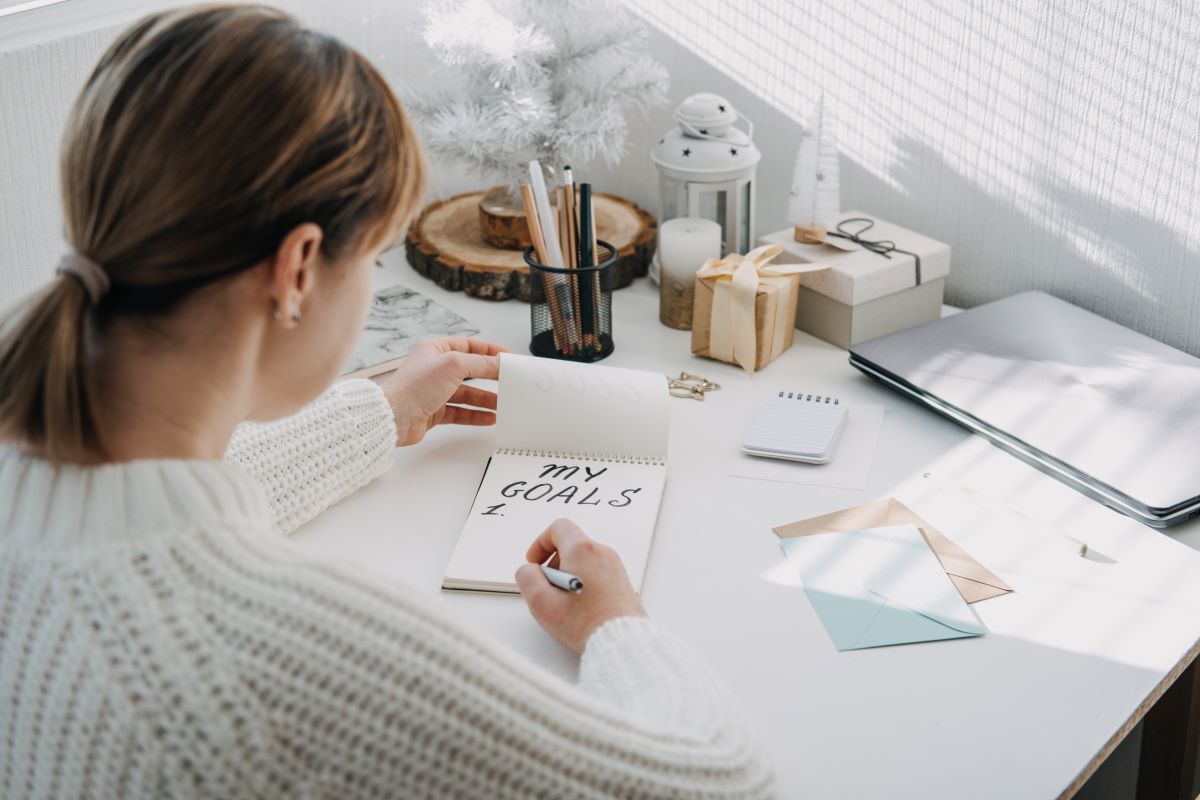In their wisdom and simplicity, Zen masters will state that an Enso Circle cannot be explained. It can only be experienced. Those who practice the art of the Enso will state that it is both simple and hard. Both of these statements explain this ancient Japanese art form perfectly.
You may have seen the Enso circle in art, tattoos or elsewhere. But do you know what it stands for and symbolizes?
Explore emotional well-being with BetterHelp – your partner in affordable online therapy. With 30,000+ licensed therapists and plans starting from only $65 per week, BetterHelp makes self-care accessible to all. Complete the questionnaire to match with the right therapist.
What Does the Enso Circle Mean?
In its most basic terms, Enso is the Japanese word for ‘circle’ or ‘circular form’. Think of a regular circle. You could choose to see it as a representation of nothing (that is zero).
On the other hand, the circle could be a form that encompasses everything within it. Perhaps you see it as both. In a way, that is the epitome of a Zen state of mind, where nothing and everything exists. Form is void and void is form.
The Enso ring, also referred to as a Zen Circle, is a circular form that is drawn to express the completeness or the emptiness of the present moment. Additionally, how one draws the circle represents their state of mind at that particular moment. An Enso circle is a stamp of all the things that happened in the process of drawing it.
The History of the Enso Circle
An Enso is not a character, but rather a symbol influenced by Japanese calligraphy. The roots of this calligraphy originate from 28th Century BC China, from where it was imported to Japan in the 5th Century AD.
Because it was mainly practiced by Buddhist monks and nuns before being adopted as an administrative tool for the state, Eastern calligraphy technique was widely influenced by Zen thought.
Today, one of the oldest existing Japanese calligraphy is an inscription on the famous Medicine Buddha sculpture found in the Horyu-Ji temple.

The Zen Way of the Brush
Zen typically refers to an insight into Buddha-Nature through meditation and the expression of this insight in one’s daily life. Buddha-Nature is the recognition of the nature of the mind for what it is–when one goes beyond the illusions of the mind.
Buddhism is the practice or the path that leads to this insight–to the awakening of the true nature of reality.
Creating a Japanese Enso is similar in thought and practice. An Enso is drawn in one continuous brush stroke, with only one chance to perform it to completion. There is no going back to correct it.
To begin with, this requires concentration and certainty. This can only be achieved through mindfulness–that is to have the ability to clear one’s mind and to be fully present in the moment.
But at the same time, drawing an Enso requires one to be fluid. You cannot consciously pause in between a brush stroke to brace yourself for a perfect outcome. This calls for practicing no-mindfulness. To not be concerned about the skill, effort and result.
One simply lets it flow from the unconscious. No-mindfulness is one of the pillars of Zen Buddhism that encourages the connection with the spiritual rather than the physical. As such, drawing the Enso circle has been referred to as the Zen way of the brush.

Creative Non-Creativity
“The Enso represents the wholeness of experience. It is non-duality,” Japanese calligrapher and Zen teacher Kazuaki Tanahashi explains.
“Because it does not depend upon language, you can by-pass intellect and communicate more directly. It is simple because it is a circle but it is a very demanding experience because there is no explanation. You need to live with it. An Enso is done decisively, once and no correcting. But it is not so creative. So drawing a Zen circle is a creative experience without using creativity.”
The Enso And Wabi-Sabi (Imperfect Beauty)
An Enso ends up being a unique expression of the artist’s present reality in all its gore and glory.
In art and aesthetics, the expression of a temporary and imperfect beauty is called Wabi-Sabi. Think of it as the feeling you get when you see a chipped rustic old china-bowl or the sense of awe evoked by a harsh landscape.
It is the perfection of the lotus blooming in a muddy pond. In its aesthetic essence, Wabi-Sabi is natural, authentic, asymmetrical, rough, simple and minimal.

In Buddhism, Wabi-Sabi is used to refer to the three states existence:
- Impermanence
- Suffering
- Nothingness
In an Enso circle, form (the brush stroke) is void (the center of the circle) and vice versa.
The reality of life is that nothing lasts, nothing is complete, and nothing is perfect. Because drawing an Enso circle involves one single, non-repetitive and incomplete brush stroke, it is not dependent on ‘perfection’. Yet in this imperfection, the reality of one’s true nature is instantly and fully expressed.
Every time the calligrapher has to draw a new Enso, the previous is left behind. This transition is the impermanence of everything.
Drawing an Enso can be defined as the practice of expressing the imperfect (suffering, emptiness) beauty (life, awareness, freedom) of the present moment, letting it go and starting all over again.
Before You Learn How to Draw an Enso
Setting out to learn how to draw ‘good’ Zen symbol defeats the purpose. In this Art, skill is not important.
The story is told of a young Zen monk named Hakuin. He had undergone intensive symbol painting–his strokes were exemplarily polished. One day, he saw the work of an old Zen Master whom he greatly admired. But Hakuin was very surprised at how rustic and unpolished the Master’s strokes were.
On reflecting upon this, Hakuin realized that his work had not come from an expression of self-realization, but from the learning. Realizing that Zen art grows from years of discipline and quest for enlightenment, Hakuin burned his brushes and did not return to art until after 40 years of Zen practice.
The moral of this story is that Zen art is an outward expression of the inner state. Drawing an Enso takes as long as it takes to awaken. For most of us, this is a lifetime job.
The beauty of it is that even the imperfection of the beginner is perfect because it serves to capture the present moment. The present moment is perfect. It is complete. It is a circle.

Like this Enso wall art? Buy one like it here!
How to Draw an Enso
Ensos come in different forms.
Some have bold strokes with sprayed bristles, and others are lean and clean.
Some are almost perfect circles while others are more oblong.
Some form a complete circle, and others are a loop.
Some masters use the same pattern strokes over and over again (they are not interested in variety) yet you will note each Enso remains different from the other–expressing the uniqueness of each moment.
Some include words inside or around their circles explaining the artist’s deeper meaning. Zen art is as diverse as the souls that walk the path.
You don’t have to draw an Enso on paper with a brush and ink. It can be done in air–with one complete invisible swoop of the finger, with your feet on the sand or snow, and you can use rocks or energy stones to lay out a pattern in a room.
But to keep it simple here is how to paint an Enso on paper and get a photograph of your inner state in 15 seconds or less.
- Find a stable surface.
- Ensure your paper/material is stable. You can lightly place one of your hands on it.
- Dip your brush in ink/paint. Saturate the brush.
- Hold the brush horizontal to the paper—or however you find works for you.
- Make sure the bristles are completely lying on the page.
- Stand still, relax.
- Breathe in deeply. As you exhale, let your brush flow in a circular path on the paper/canvas.
- Most people follow a left to right, top to bottom motion, but you can paint in any direction you feel.
- Do this in one stroke—preferably for the time it takes you to complete the out-breath.
Here’s a video that shows the process step-by-step. But again, don’t worry about trying to do it “right.”
The Use of Enso Outside of Buddhism
In modern times, a large percent of Zen artists place a lot of significance in its esoteric nature as prescribed in the confines of Buddhism. But many in the West have used the same concept in other areas.
Several design firms have been known to use adaptations of the symbol on logos and other structures to express a corporate culture of creativity and other related concepts.
Various disciplines of Art and other crafts use the Zen art to enhance their own technique. For example, there is a saying in martial arts that if you are skillful with the sword, you are skillful with the brush. Painting the Enso can enhance the fighter’s posturing, mental clarity and foot and hand work.
Outside of Buddhism, nowhere has this symbol been used more to express individuality than in body art and tattoos.

Applying the Enso in Your Daily Life
The search for enlightenment and related practices are now more entrenched in the every-day livelihoods of Western society.
Above all else, these practices, including Enso art, teach us to be fully present. They encourage us to concentrate on what one is engaged in and to be aware of the experience that activity is creating.
The activity could be reading, eating, driving or listening to a friend. Mindfulness adds meaning to all of life’s experiences. The meaning it adds is that, no matter how perfect or imperfect the present moment is, it is the only one that matters.
The past (yesterday’s unpolished Enso) or the future (tomorrow’s Enso that could be better with practice) do not matter. Yet no matter how good or bad the present moment is, it shall come to pass.
Kazuaki Tanahashi sums it up perfectly – “If each moment is our entire life, how dare we kill time? If each stroke is our entire breath, how dare we correct it?”






